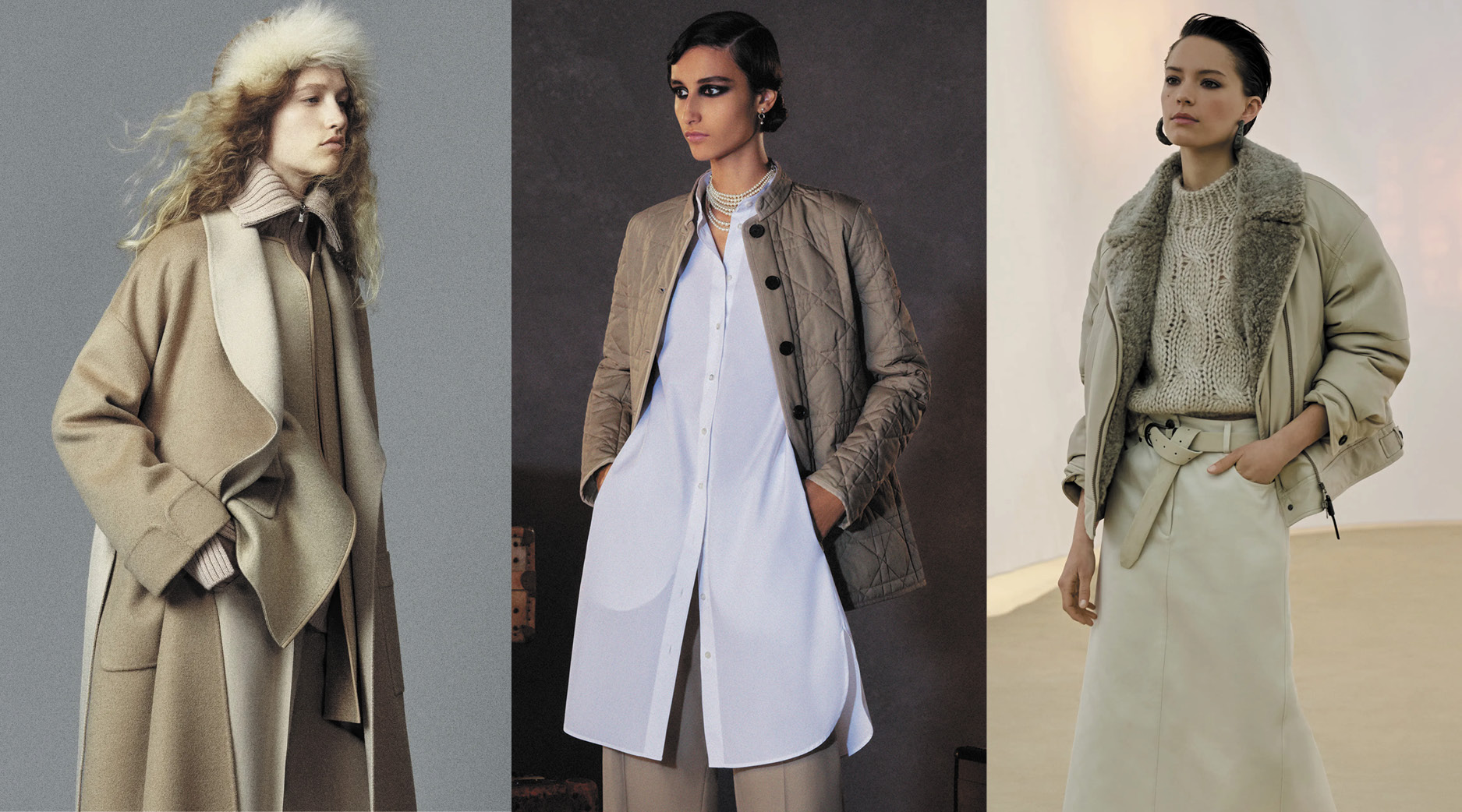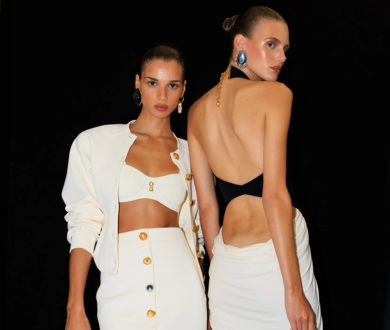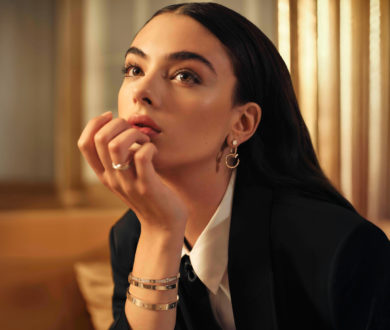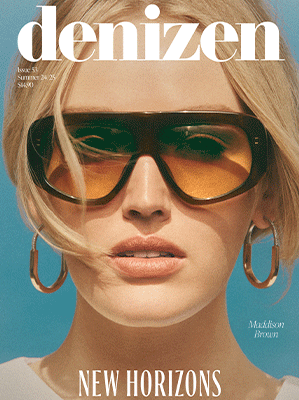Whether you’re a Succession devotee or not, you’ll likely be familiar with central character, Tom Wambsgans’, reaction to a handbag in the first episode of the show’s fourth (and final) season.
“…She’s brought a ludicrously capacious bag,” he says. “What’s even in there? Huh? Flat shoes for the subway? Her lunch pail? I mean, Greg, it’s monstrous. It’s gargantuan. You could take it camping. You could slide it across the floor after a bank job.”

Sign up to our free EDM subscription today.
It was a cultural moment, mostly because it spoke to something far more significant than the show itself (popular as it may be). It underlined the paradigm shift happening in the world of luxury right now, one in which the logomania of yesteryear has been usurped by the idea of ‘quiet luxury,’ as ‘billionaire bore-core’ or ‘stealth wealth’ becomes fashion’s new direction.
The rise of this movement has drawn widespread discourse. Sparked by luxury brands’ recent deviation from overt logos, furthered by Succession’s carefully-curated character looks and thrust into the mainstream by the meticulous outfits Gwyneth Paltrow wore in her now-iconic ski trial, quiet luxury is as pervasive and as influential as ‘normcore’ was in the 2010s. But what is it actually?
At its heart, quiet luxury does what it says on the label. It is fashion that whispers about its wearer’s deep pockets, so deep that they are able to pay $1500 for a plain polo shirt with no distinct markings whatsoever. (Or in Paltrow’s case, $1690 for a merino sweater from The Row.) So deep, in fact, that their entire wardrobe consists of simple, understated pieces that (to the untrained eye) could have come from anywhere, but that require at least a four-figure investment. In a way, it emphasises fashion’s unsung heroes, putting our foundational staples at the forefront by reimagining them in premium fabrics, simple colours and elegant silhouettes (which actually gives the trend a sustainable edge if you subscribe to the principle of ‘buy once, buy right’). It is undeniably subtle, inherently timeless and completely out of reach for most, with the point being to only confirm one’s personal wealth to those ‘in the know.’

Brands like The Row, Zegna, Chloe and Jil Sander are obvious examples, but quiet luxury has recently permeated the runways of Christian Dior, Prada, Miu Miu, Saint Laurent and even Gucci and Louis Vuitton, which marks a distinct about-face for the last two, who, until recently, had made headlines for collections that were eccentric, head-turning and covered in logos. And with the way things are going, we expect that a number of other brands will follow suit soon, as quiet luxury is forecast as the most significant aesthetic shift of the year.
Vogue defined quiet luxury as “…less austere than minimalism but more polished than ‘normcore,’ while Elle magazine dubbed it the “new age minimalism.” And as Leandra Medine articulated in a recent post on her Substack The Cereal Aisle, “…most of the defining attributes of ‘QL’ refer to the quality of the material, the palette of neutral colours, and the overall emphasis on basic silhouettes, reflecting a low-key approach to getting dressed…” She continues, “…but I think the defining element of quiet luxury… relates more to the focus on its resemblance to an aesthetic most commonly perpetrated by the ‘old money’ archetype.”
This last part is interesting. The connection between quiet luxury and old money is obvious, and both have enjoyed almost parallel ascents to pop-culture popularity. In fact, research has shown that online searches for ‘old money,’ ‘stealth wealth’ and ‘quiet luxury’ have skyrocketed 300-500 percent in the last few months, while the ‘old money aesthetic’ has been recently trending among TikTok’s Gen Z tastemakers, with many seeking to emulate the trope despite not having the disposable income to do so properly. (The idea is being able to find dupes thanks to the trend’s understated playbook). And while that works to a degree, quiet luxury is meant to only communicate the status of its wearer via expertly-crafted cuts, heritage prints, sumptuous materials and a penchant for neutrality which, most of the time, is only obvious to those who can decipher the code. Those who can, for instance, distinguish a simple Loro Piana sweater from a Zara one, or can tell the difference between Mark Zuckerberg’s $500 custom Brunello Cucinelli T-shirts and the almost-identical H&M versions. After all, the true definition of luxury is (and always has been) fluid; only really understood in its relation to the uber- wealthy. Ultimately, it is they who set the terms, and only they who can change the rules. (Usually when something has become too mainstream.)

Perhaps the romanticism of ‘old money’ is also a reaction to the global economy; where people would rather live in the fantasy of being born into the kind of privilege that virtually no one else (save a few savvy individuals) can earn by working hard. A world in which the threat of recession or inflation has little impact; a world in which one is so secure in their wealth that exclusivity is based on the intrinsic value of a product and not on any external markers.
The idea of anonymity also plays a huge role here. Quiet luxury touches on our collective desire to fly under the radar, understandable at a time when almost everything about us is out there for general consumption. There is something deeply appealing about using fashion to communicate restraint, privacy and the luxury of keeping a few things close to our chests. Of course, the underlying irony here is that the discourse around quiet luxury has left most questioning how ‘quiet’ it really is anymore. I would go so far as to say that we have turned up the dial on this trend so much that the word ‘quiet’ doesn’t really fit. Furthermore, if we’re honest with ourselves, the idea of being incognito (truly incognito) is nothing more than a romanticised myth; something from a bygone era on which we look back with wistful nostalgia. In reality, many who now are adopting quiet luxury are doing so because of its trending status, and not because they want to be quiet about it at all. I’ve even seen commentary recently on the fact that fast-fashion brands like Shein are jumping on the bandwagon (which could very well signal the beginning of the end).
“At its heart, ‘quiet luxury’ does what it says on the label. It is fashion that whispers about its wearer’s deep pockets, so deep that they are able to pay $1500 for a plain polo shirt with no distinct markings whatsoever.”
There are already indications that the fashion cognoscenti are tiring of this trend. In a recent article for The Cut, 032c magazine’s Editor, Brenda Weischer pointed to the way in which the youth’s obsession with quiet luxury is at odds with their ‘eat the rich’ ethos, and questions why anyone should care about blending in with the style of “CEO Boomers,” who she describes as “predominantly white men who are afraid of fashion due to their own internalised toxic masculinity.” She also (rightly) says, “the stylists of Succession are doing a very accurate job; however, how is it lost on the audience that these characters are absolute miserable losers?” The article ends on this: “Enough with quiet luxury. If we can’t attain it, why not embrace being loud?”
Wherever you fall in the discourse around this trend, quiet luxury is, at its heart, a back-to-basics approach to fashion. There is something to be said for the way in which all of this debate around its nature and importance takes something away from the inherent concept. You don’t have to have eye-wateringly deep pockets to buy once and buy well. A sustainable, chic wardrobe of investment pieces can be built slowly, with patience, and it will last you a lifetime. That, and not its ability to signpost wealth, is what we should try to take from the rise of quiet luxury. And if you would rather stick to your high-octane, head-turning, logo-adorned looks — do. Wear the ludicrously capacious bag, for goodness sake. Quiet luxury is louder than its name suggests, so maybe, actually turning up the volume is the subversive shift we need.









